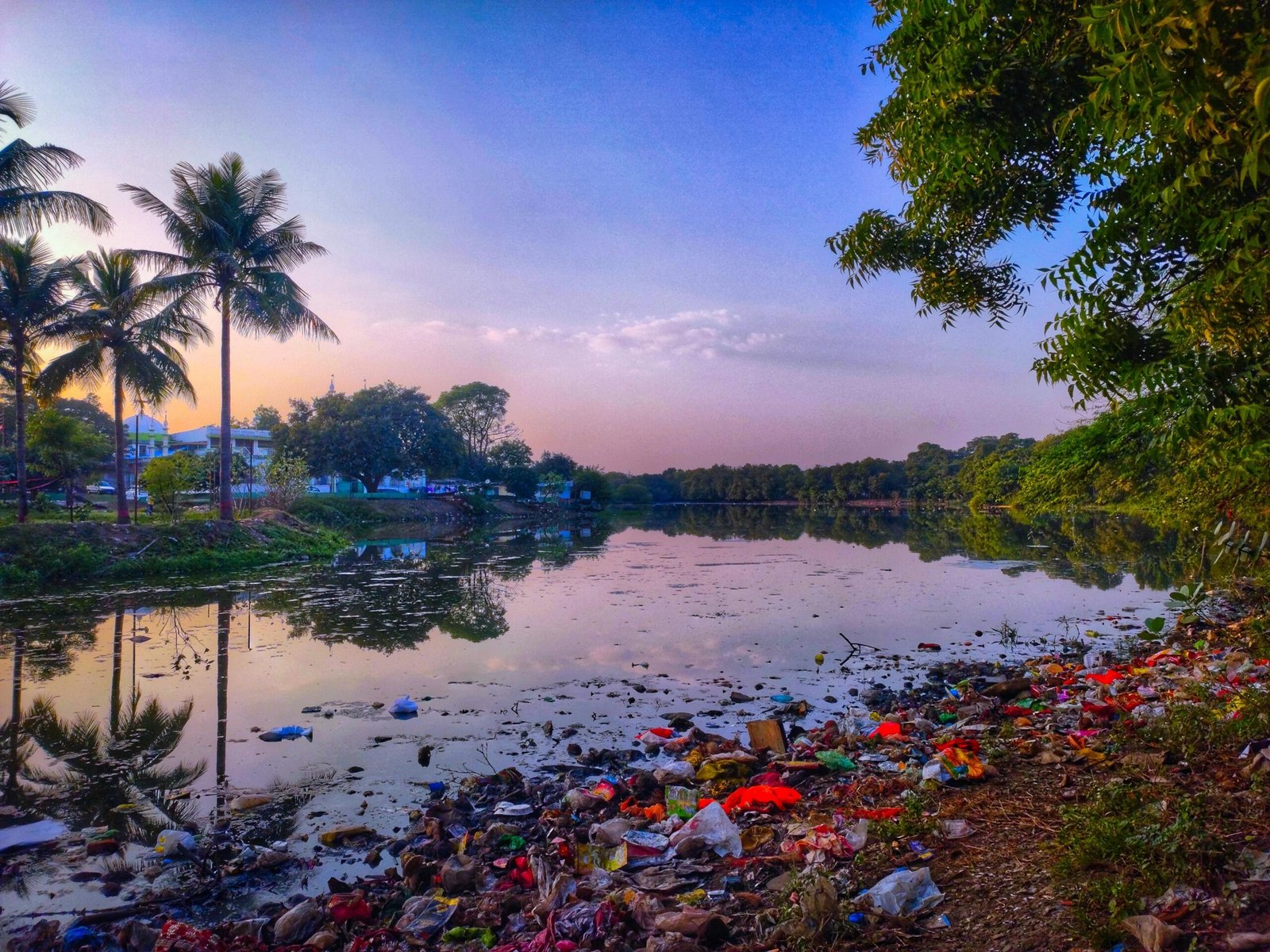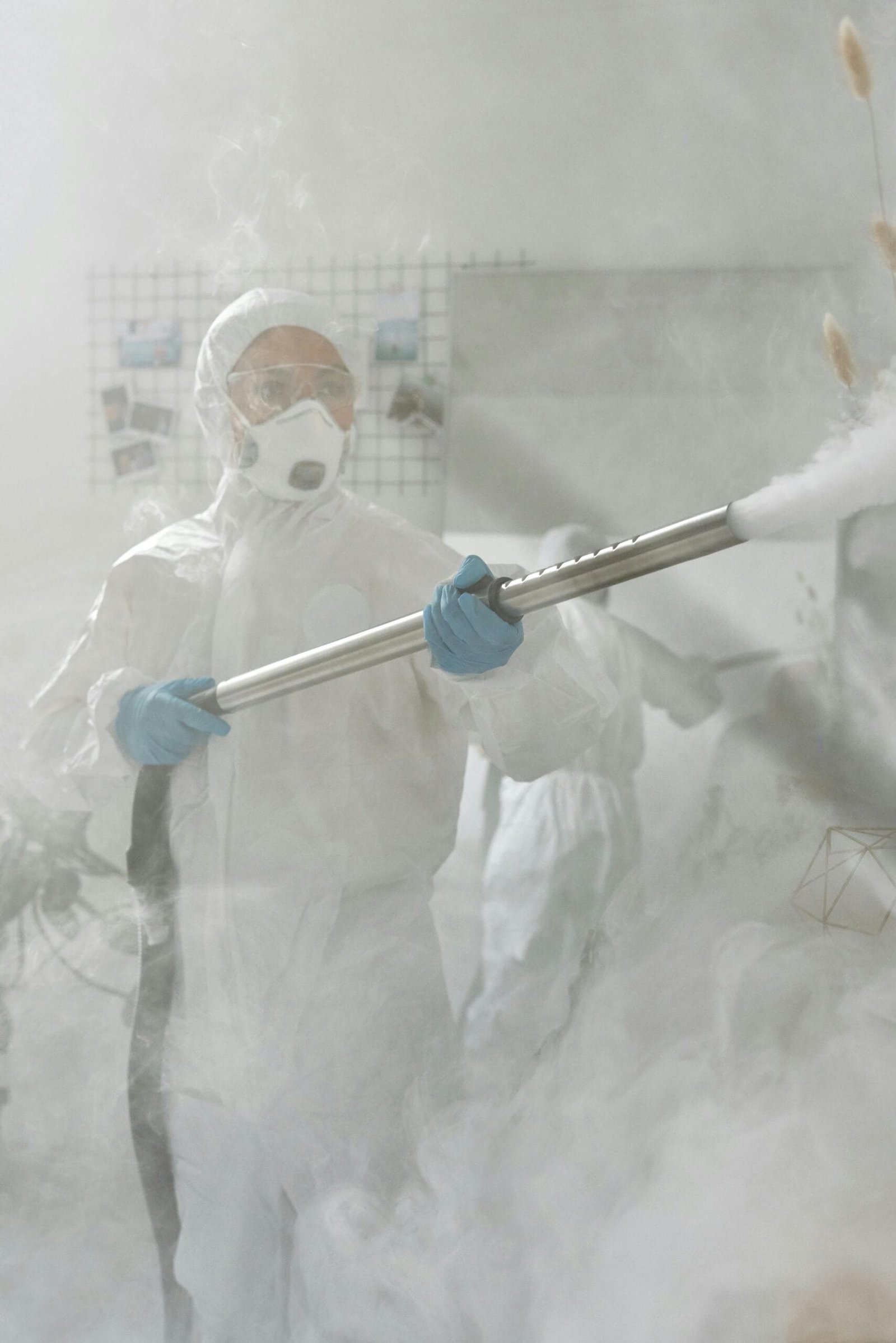Could pesticides used near your property end up in your drinking water?

Can Pesticides Affect My Water Well?
You rely on a well for clean, safe water, and you deserve to know whether pesticides around your home or farm could threaten that resource. This article explains how pesticides travel, which ones are most likely to contaminate wells, signs of contamination, testing and treatment options, prevention strategies, regulatory context, and what to do if you find pesticides in your water.
How pesticides can reach groundwater
Pesticides can move from the surface into the subsurface through several processes. Rain or irrigation can carry dissolved pesticides or pesticide-laden soil particles downward. The speed and extent of movement depend on soil type, depth to groundwater, the chemical properties of the pesticide, rainfall intensity, and whether the soil is fractured or porous.
Groundwater flow patterns determine where contaminants go once they pass below the soil surface. If your well draws from shallow groundwater or is near the path of contaminated flow, your water can be affected. Even wells with casing that prevents direct surface entry can be vulnerable if pesticides move through surrounding aquifers.
Types of pesticides and their groundwater risk
Different pesticides have different tendencies to persist, dissolve, attach to soil, or degrade. Understanding those properties helps you assess the risk to your well.
Herbicides
Herbicides control weeds and are used widely on lawns, gardens, and farms. Some common herbicides like atrazine and metolachlor are known to move into groundwater because they are relatively soluble and persist long enough to reach aquifers. Others bind more strongly to soil and pose less groundwater threat.
Insecticides
Insecticides vary widely. Organophosphates tend to break down relatively quickly, reducing long-term groundwater risk, while some neonicotinoids are more persistent and mobile. The specific chemical matters when assessing risk.
Fungicides
Fungicides are used on crops and ornamental plants. Some are persistent and can leach into groundwater, especially under repeated applications and high rainfall. Fungicides with low solubility and high soil binding are less likely to reach groundwater.
Fumigants and soil fumigants
Fumigants are volatile and often used to control soil pests in specialized applications. Because they can volatilize, they may move through soil gas as well as dissolve into water. Their risk depends on the compound and site conditions.
Table: General pesticide properties and groundwater risk
| Property | Tends to increase groundwater risk | Tends to decrease groundwater risk |
|---|---|---|
| Water solubility | High — more likely to move with water | Low — more likely to stay in soil |
| Persistence (half-life) | Long — stays long enough to reach aquifer | Short — degrades before reaching groundwater |
| Soil adsorption (Koc) | Low adsorption — more mobile | High adsorption — binds to organic matter |
| Application frequency/intensity | Repeated heavy use increases cumulative risk | Low or sporadic use reduces risk |
How well construction affects vulnerability
The way your well is built and maintained plays a large role in whether pesticides will get into your water.
Well type and depth
Shallow wells that draw from near-surface aquifers are generally more vulnerable than deep wells. Dug or bored wells without proper casing can allow contaminants to enter directly. Properly constructed drilled wells that reach deep, confined aquifers are typically less vulnerable.
Well casing and grout
A continuous, sealed casing with properly installed grout prevents surface water and contaminants from flowing down the outside of the well pipe directly into the water-bearing zone. Cracks, missing grout, or improperly sealed caps create pathways for pesticide-laden surface water.
Wellhead protection and location
If your wellhead is located downhill from areas where pesticides are applied, or if it’s near irrigation return flow, it’s at greater risk. Surface features like nearby drainage ditches, low spots, or uncovered wells increase vulnerability.

Environmental and soil factors that influence pesticide movement
Several environmental factors determine whether pesticides move from application sites into groundwater.
Soil texture and structure
Sandy soils with large pores allow rapid downward movement of water and dissolved chemicals. Clay soils slow percolation but may promote lateral movement. Soils with high organic matter tend to bind many pesticides, reducing mobility.
Depth to groundwater and water table fluctuations
A shallow water table means there’s less soil layer to attenuate pesticides. Seasonal rises in the water table can bring groundwater closer to contaminated zones, increasing the chance of infiltration.
Climate and rainfall patterns
Heavy rainfall or intense irrigation soon after pesticide application can accelerate leaching, washing chemicals down into the soil profile before they degrade. Dry conditions can reduce movement temporarily, but heavy storms later can mobilize stored residues.
Soil microbiology and degradation
Microbial activity breaks down many pesticides. Warm, aerated soils with active microbial communities generally reduce pesticide persistence. Cold, waterlogged, or sterile soils can slow degradation and increase leaching risk.
Typical sources of pesticide contamination near wells
You should consider many possible pesticide sources when assessing risk around your well.
Agricultural fields
Large-scale pesticide applications on crops are a major source. Drift from spraying, runoff, irrigation return flow, and treated seed residues can all contribute to groundwater loading.
Home gardens and lawns
Repeated use of herbicides, insecticides, and fertilizers on lawns and gardens can create localized contamination, particularly when wells are nearby and soil is sandy.
Golf courses and parks
These areas often receive frequent pesticide applications and can be significant localized sources, particularly if they are close to residential wells.
Nurseries and greenhouses
High-frequency pesticide use in nurseries can lead to higher localized residues in soil and runoff.
Improper storage and disposal
Leaks from pesticide storage containers, spill sites, and improper disposal (e.g., pouring unused pesticides on the ground) create hotspots of contamination with a high potential to reach wells.

Signs that pesticides may be affecting your well
You may not be able to detect pesticides by smell or taste in many cases, so the main way to know is through testing. However, some signs can raise suspicion.
- Sudden unexplained illness in household members after using well water (consult a physician and public health provider).
- Nearby pesticide application events followed by noticeable changes in water clarity or odor.
- Detectable residues in nearby surface waters or in neighboring wells.
- Unusually high nitrate levels or other indicators of agricultural influence (not definitive but suggestive).
Because many pesticides are odorless and tasteless at low concentrations, testing is essential for confirmation.
What tests to request for your well
Testing for pesticides often requires lab analysis using sensitive methods like gas chromatography-mass spectrometry (GC-MS) or liquid chromatography-tandem mass spectrometry (LC-MS/MS). You should know which compounds are of concern and request appropriate panels.
Basic microbial and general chemistry tests
Start with routine tests to ensure overall water safety: total coliform, E. coli, nitrate, pH, hardness, and electrical conductivity. These don’t detect pesticides but help assess other contamination pathways and water quality.
Specific pesticide panels
Labs can test for groups of compounds (e.g., common herbicides like atrazine, simazine; insecticides; neonicotinoids). Ask your state laboratory or a certified private lab what panels they offer and which pesticides are common in your area.
Targeted testing based on use
If you know a specific pesticide was applied nearby — for instance, a particular herbicide used on a neighboring field — request testing for that compound and known transformation products (metabolites), which sometimes persist longer than the parent compound.
Frequency and timing of testing
Test soon after suspected contamination events (heavy rain after application) and seasonally if you rely on shallow groundwater in agricultural areas. If your initial test is negative but you remain concerned, follow-up testing after different weather conditions is sensible.

Sampling best practices
Correct sampling procedures are essential to avoid false negatives or positives.
- Use a certified lab’s sampling kit and follow instructions exactly.
- Avoid collecting water during or immediately after well maintenance unless that’s the purpose.
- Run water for the time recommended by the lab to sample from the aquifer rather than standing water in pipes.
- Use clean, pesticide-free containers supplied by the laboratory; do not use household bottles.
- Note the date, time, recent weather, and any nearby pesticide applications when you collect the sample.
Interpreting lab results and health standards
Pesticide detection does not always mean immediate health risk — concentration matters.
Regulatory limits and health advisory levels
Drinking water standards vary by jurisdiction. For many pesticides, regulated Maximum Contaminant Levels (MCLs) exist at the federal or state level. For others, health advisory levels (non-enforceable guidance) or no established standard may apply. Compare detected concentrations to applicable MCLs or state guidelines.
Chronic vs. acute exposure
Some pesticides pose acute toxicity at high concentrations, while others present long-term cancer or reproductive risks at low chronic exposures. Consider both short-term and long-term health implications.
Metabolites and breakdown products
Labs may report metabolites separately. Some metabolites are more mobile and persistent than parent compounds and may be subject to regulation or advisories. Ask your lab or public health agency how to interpret metabolite results.

What to do if your well is contaminated
If testing shows pesticides above health-based limits or you have reason to suspect contamination, take immediate and follow-up actions.
Immediate steps
- Stop using the water for drinking and cooking if concentrations exceed health guidance. Use bottled water or an alternate safe source.
- Avoid using contaminated water for food preparation, washing produce, or giving to infants.
- Report results to local health authorities and your state drinking water program for guidance.
- Notify neighbors if contamination could affect nearby wells.
Remediation and treatment options
Treatment depends on the pesticide type and concentration. Options include:
- Granular activated carbon (GAC) filtration: Effective for many organic pesticides and can be installed at point-of-entry (whole-house) or point-of-use (kitchen tap). GAC sorbs organic molecules; cartridges must be sized and replaced based on use and contaminant levels.
- Reverse osmosis (RO): Effective for many pesticide residues at point-of-use (under-sink RO), but not practical as a whole-house solution for high flow demands.
- Ion exchange: Generally used for charged molecules; limited application for pesticides.
- Enhanced oxidation: Advanced oxidation processes (ozonation, UV/peroxide) can degrade some organics but are more complex and costly.
- Well rehabilitation or deepening: If the contamination source is shallow, drilling deeper to a clean aquifer with proper casing and grouting may be an option.
- Abandonment and replacement: In severe or persistent cases it may be necessary to abandon the contaminated well and install a new properly located and constructed well.
Work with certified water treatment professionals and local health agencies to choose appropriate treatment and maintenance plans.
Monitoring after treatment
If treatment is installed, pursue a monitoring plan to ensure it remains effective. Replace filters on schedule, sample treated water periodically, and maintain detailed records.
Preventing pesticide contamination of your well
Prevention is often cheaper and more effective than remediation.
Establish setback distances
Maintain buffer zones between your well and pesticide application areas. A minimum setback of several hundred feet is typical for agricultural applications, but local regulations and site conditions determine appropriate distances.
Proper well construction and maintenance
Ensure your well is constructed with proper casing, grout, and a sealed well cap. Regular inspections for cracks, damaged caps, or nearby pathways for surface water protect your well.
Responsible pesticide use and storage
If you apply pesticides yourself, follow label instructions for application rates, timing, and buffer zones. Store pesticides in secure, contained areas away from wells and watercourses. Dispose of unused pesticides through hazardous waste programs rather than pouring on soil.
Manage runoff and drainage
Direct runoff away from your wellhead. Use vegetation buffers, berms, or diversion ditches to reduce the chance that surface-applied pesticides flow toward your well.
Reduce pesticide dependence
Adopt integrated pest management (IPM) practices to minimize pesticide use while still controlling pests. IPM strategies include mechanical weed control, biological controls, targeted spot treatments, and using less mobile or less persistent pesticides where possible.
Legal and regulatory considerations
You may have options for recourse or assistance if agricultural or commercial applications contaminate your well.
Reporting and agency resources
State Departments of Agriculture, environmental protection agencies, or public health departments often respond to contamination reports. They can provide testing resources, guidance on treatment, and information on regulatory limits.
Liability and compensation
If negligence, improper application, or illegal discharge caused contamination, you may have legal recourse. Documentation (dates, lab results, photos, neighbor application records) strengthens any claim. Consult an attorney experienced in environmental or water law for advice.
Local ordinances and zoning
Some jurisdictions regulate pesticide application near residential wells, require buffer zones, or limit certain chemicals. Check local rules and participate in community planning to protect well water resources.
Costs to expect for testing and treatment
Understanding costs helps you plan. Prices vary widely by region and the complexity of testing or treatment.
Testing costs
- Basic microbial and general chemistry: $25–$150 per test, depending on location.
- Standard pesticide panels: $100–$500, depending on the number of compounds included.
- Comprehensive multi-residue tests for many pesticides/metabolites: $500–$2,000.
Treatment costs
- Point-of-use reverse osmosis: $300–$1,200 for system and installation.
- Point-of-use carbon filters: $50–$300 per unit; filter replacements $20–$100 at intervals.
- Whole-house granular activated carbon systems: $1,500–$6,000 or more, including installation and replacement cartridges.
- Well deepening or replacement: $3,000–$15,000 or more depending on depth and geology.
- Advanced oxidation or custom systems: Many thousands of dollars, varying by scale and complexity.
Costs are estimates; obtain quotes from local labs and certified installers.
Health effects linked to pesticide exposure through drinking water
Health outcomes depend on the pesticide, concentration, and exposure duration. Acute poisoning is rare from well water at environmental concentrations, but chronic exposure can raise concerns.
Short-term effects
High-level acute exposure (rare through drinking water) can cause nausea, vomiting, headaches, dizziness, and neurological symptoms depending on the pesticide class.
Long-term effects
Long-term exposure to some pesticides has been associated with increased cancer risk, endocrine disruption, reproductive and developmental effects, and neurological issues. Risk assessments use lifetime exposure models and are compound-specific.
Sensitive populations
Infants, pregnant people, the elderly, and immunocompromised individuals can be more vulnerable to pesticide exposure. Consider extra precautions if someone in your household falls into a sensitive group.
Case studies and real-world examples
Reviewing real incidents can help you understand how contamination occurs and is addressed.
Agricultural region with atrazine detections
In several Midwestern agricultural watersheds, atrazine, a widely used herbicide, was detected in shallow groundwater and some private wells during spring runoff and heavy rainfall years. Strategies that helped included switching to atrazine alternatives with lower groundwater mobility, implementing buffer strips, and installing point-of-use removal systems for affected households.
Home lawn pesticide misuse
A homeowner repeatedly applied lawn herbicides and stored unused product in a shed near the well. A spill during storage led to localized contamination of a shallow well. Removing the source, pumping and treating contaminated water, and moving storage away from the well resolved the issue.
Common myths and misconceptions
Clarifying misconceptions helps you make better decisions.
- Myth: Only farms can cause pesticide contamination. Reality: Residential, commercial, and agricultural uses all can contribute, depending on practices and proximity.
- Myth: If water looks and tastes fine, it’s safe. Reality: Many pesticides are colorless and tasteless at low concentrations; testing is the only reliable method.
- Myth: Boiling removes pesticides. Reality: Boiling generally does not remove most pesticides and can concentrate some chemicals by evaporation.
- Myth: Newer pesticides are always safer for groundwater. Reality: Some newer products may be designed to be less persistent, but others can be highly mobile; check compound properties rather than assuming safety.
Questions to ask your lab or local health authority
When you’re investigating contamination, ask clear questions.
- Which pesticides and metabolites will this test panel detect?
- What are the method detection limits and are they below regulatory limits or health advisories?
- How quickly will I get results and how should I interpret them?
- If my water is contaminated, what immediate steps should I take?
- Can you recommend certified treatment vendors or remediation resources?
Long-term well stewardship
Protecting your well is an ongoing process.
- Schedule routine inspections and maintenance for the wellhead and components.
- Keep records of water tests, maintenance, and nearby pesticide applications.
- Maintain clear zones and prevent surface water pooling around the wellhead.
- Coordinate with neighbors and local agriculture to understand seasonal pesticide use patterns.
When to involve professionals
Certain situations merit professional help.
- Confirmed pesticide detections above health guidance require consultation with public health officials and certified water treatment providers.
- If you suspect large-scale or high-concentration contamination, a hydrogeologist or environmental consultant can assess plume behavior and remediation options.
- Legal questions about liability and compensation should involve an attorney experienced with environmental matters.
Summary and practical checklist
This section gives you a compact action plan you can use to protect your well.
- Assess vulnerability: Note well depth, construction, and proximity to pesticide use.
- Test your water: Start with microbial and basic chemistry and add targeted pesticide panels based on local use.
- Practice proper sampling: Use certified kits and follow directions.
- If contaminated: Stop using water for drinking, contact health authorities, and consider treatment or alternative water.
- Prevent contamination: Maintain setbacks, protect wellhead, reduce pesticide use, manage runoff, and store pesticides properly.
- Maintain records: Keep water test results, maintenance logs, and notes on nearby pesticide applications.
Table: Quick action checklist
| Action | Short-term | Long-term |
|---|---|---|
| Test drinking water | Yes — especially if near pesticide use | Periodic seasonal testing |
| Secure wellhead | Inspect for damage and seal | Rebuild/upgrade as needed |
| Prevent runoff to well | Divert water, stop surface pooling | Install permanent buffers/berms |
| Reduce pesticide dependence | Avoid unnecessary use | Adopt IPM, use safer alternatives |
| Treatment if contaminated | Use bottled water, install POE/POU systems | Consider well deepening or new well |
Resources and where to get help
- Your state or provincial drinking water program or department of health: testing guidance and regulatory standards.
- State agriculture extension offices: local pesticide use patterns and alternative practices.
- Certified water testing laboratories: sample collection kits and analytical services.
- Licensed water treatment professionals: system selection and installation.
- Environmental attorneys: legal advice if contamination is due to negligence or improper application.
Final thoughts
You have significant control over protecting your well by understanding potential risks, testing when needed, and taking preventive actions. Pesticides can affect wells under certain conditions, but with proper well construction, careful pesticide management around your property, and prompt testing and treatment when necessary, you can minimize the risk and maintain safe drinking water for your household.
If you want, you can tell me about your well type, depth, nearby land uses, or recent pesticide applications and I can suggest a tailored testing and prevention plan for your situation.
